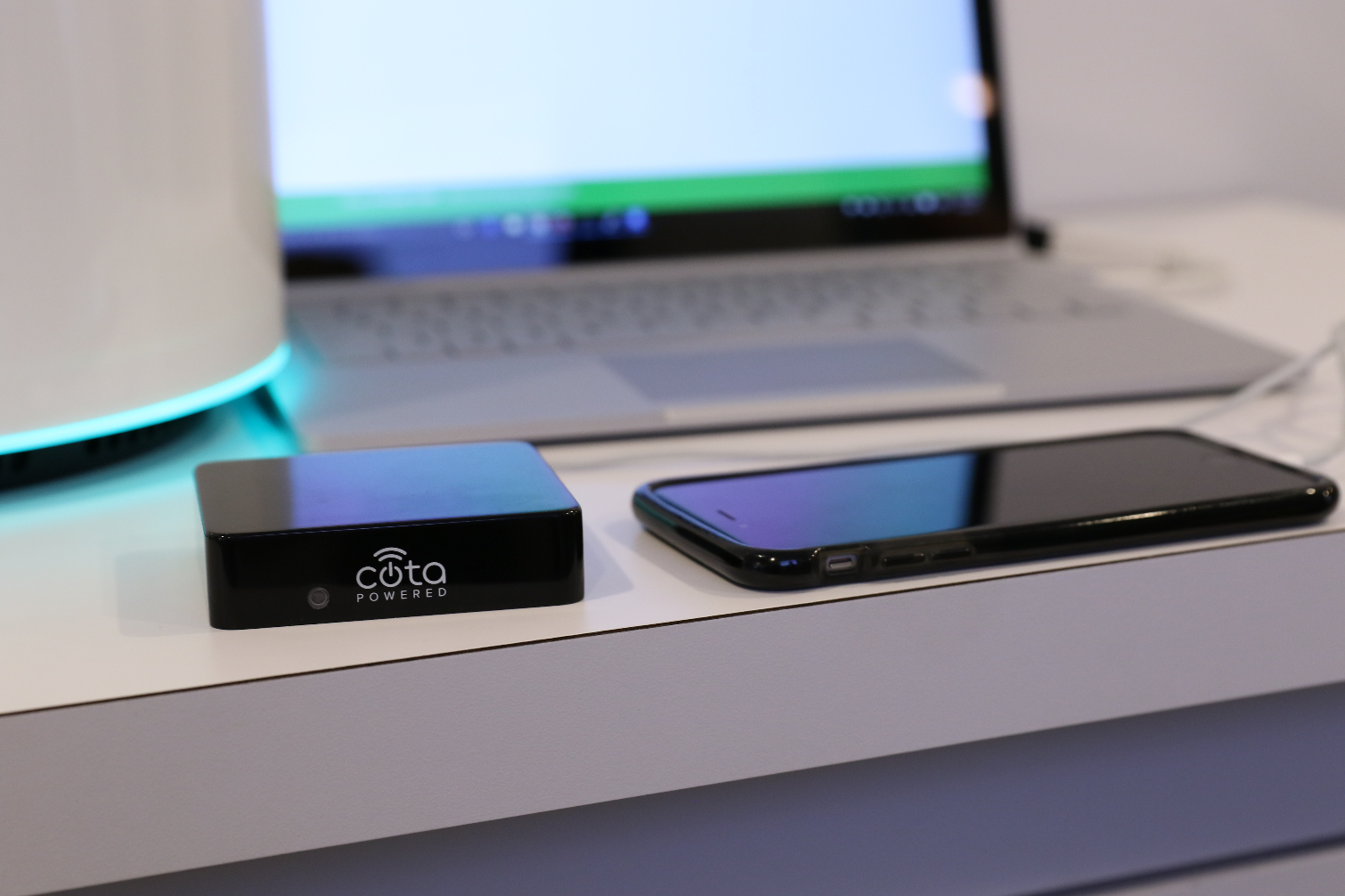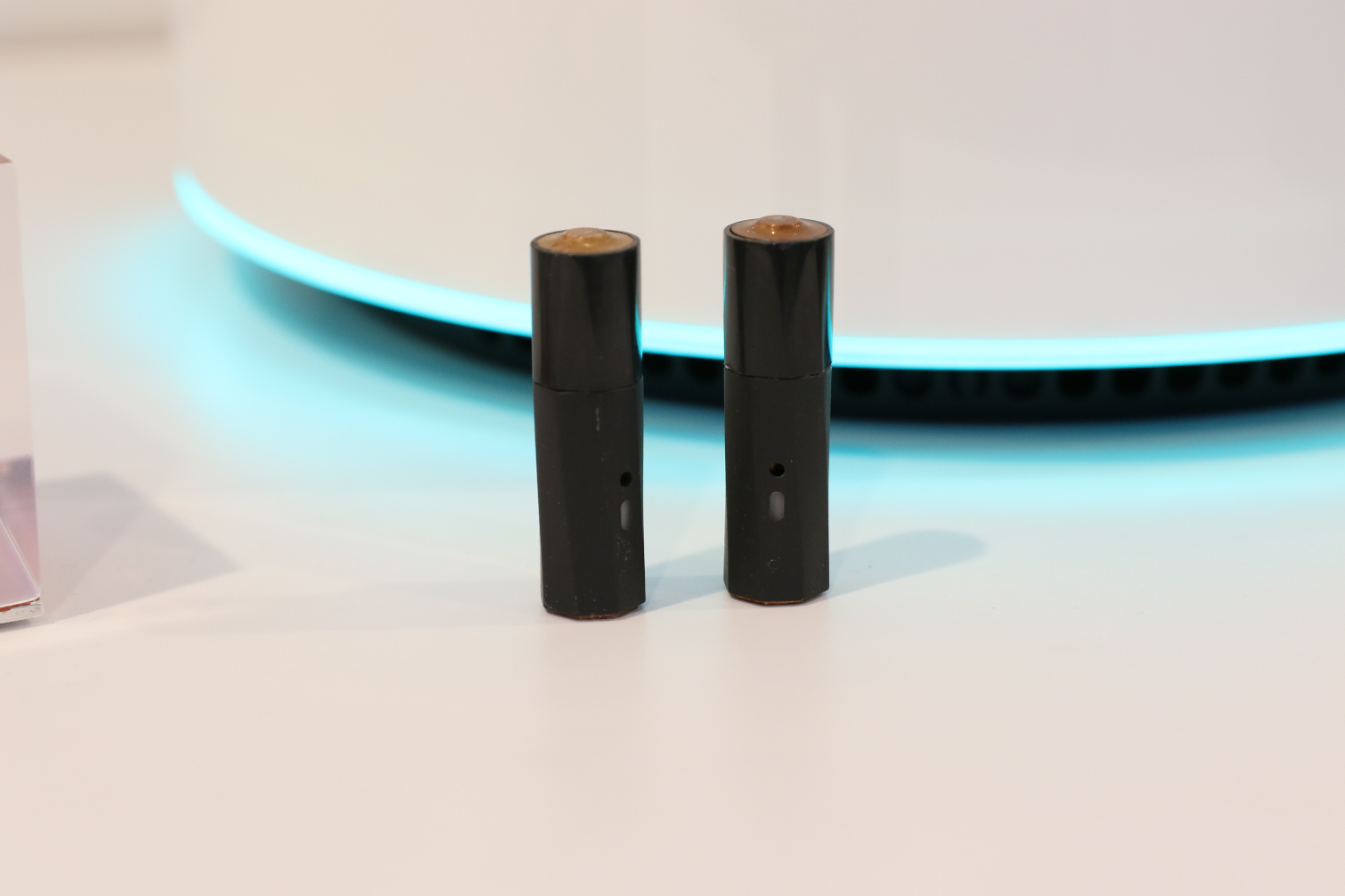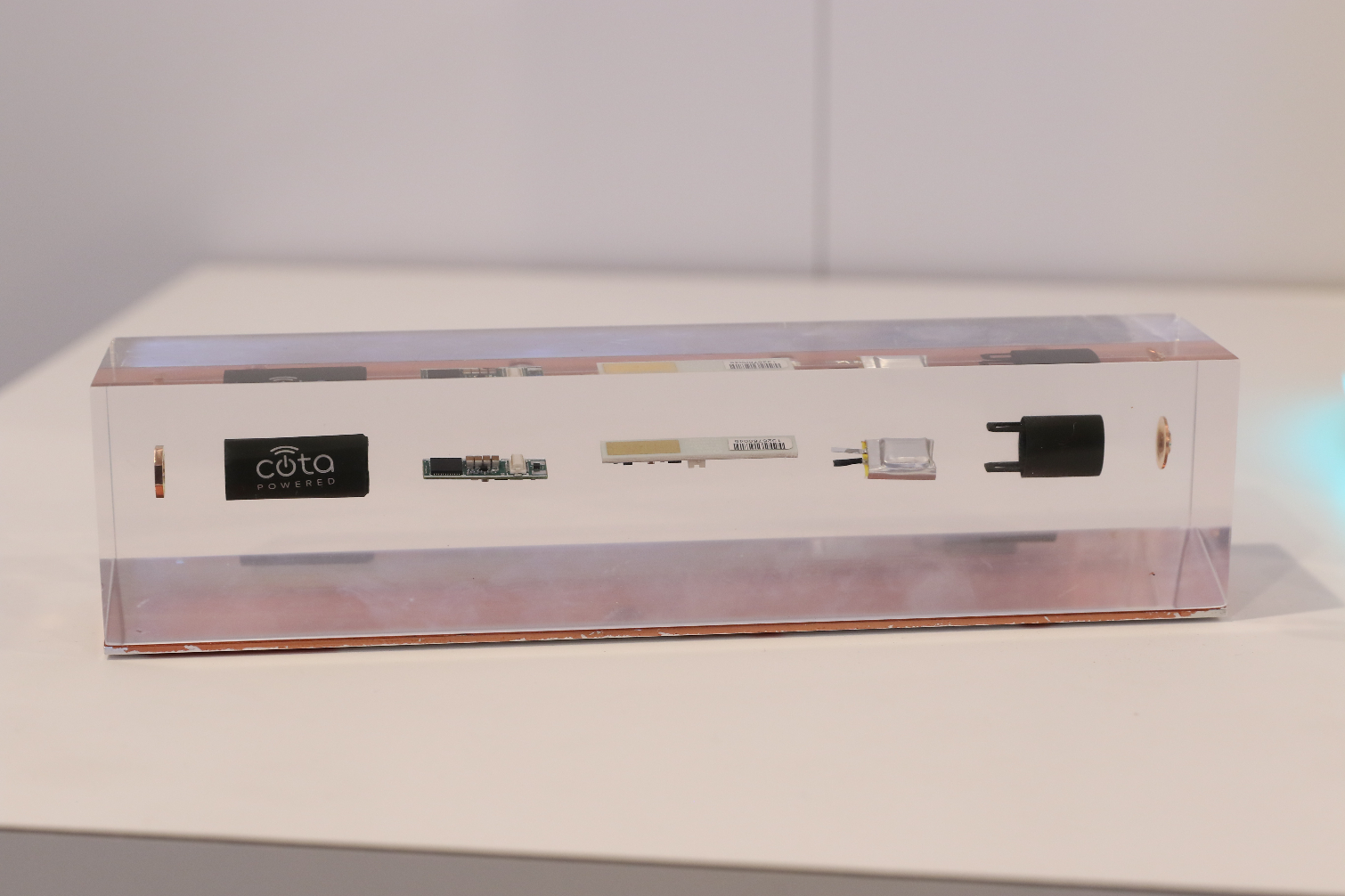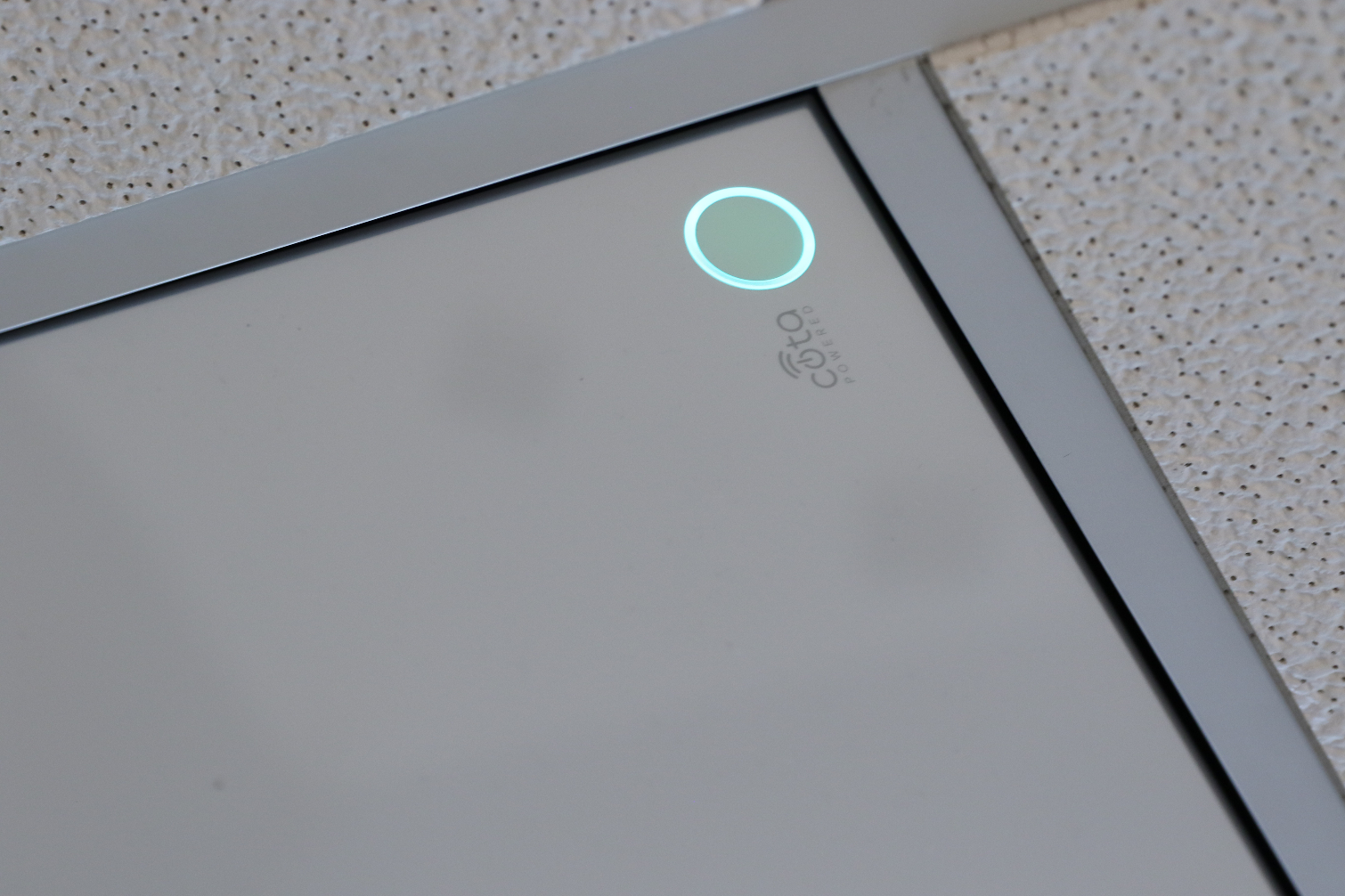This Breakthrough Can Charge Your Phone From Across the Room
Ossia's COTA technology delivers over the air the same way a router delivers Wi-Fi data.
Today's wireless charging solutions aren't much more convenient than the USB plugs they're meant to replace, because they force you to lay your device down on a pad. True wireless power that travels through the air is the holy grail of mobile tech and Ossia has found it. The startup's patented "Cota" (charging over the air) tech sends juice to devices the same way that a router sends data, using a 2.45-GHz signal.
We had the opportunity to see Cota in action at Ossia's CES booth and was blown away by its potential. Imagine a world where your phone charges in your pocket as you walk around your office or stand in line at the coffee shop. Picture a home where smart devices like your wireless security camera don't need to live near an outlet because they get a constant charge.

How It Works
The brainchild of Ossia Founder and CTO Hatem Zeine, a working Cota system involves two components: a transmitter and a receiver. The receiver is a tiny chip inside your device which broadcasts a low-power beacon signal 100 times a second to the transmitter. The transmitter receives the signal from the device and uses it to send electricity back over the 2.45-GHz spectrum.Ossia said that its devices will not interfere with Wi-Fi and that the transmitters can even be made to double as routers.
MORE: Smartphones with the Longest Battery Life
When we plugged our iPhone into a wireless dongle, which sat about 3 meters away from a Cota transmitter, the phone lit up and showed us it was charging. A status light on the dongle turned orange when it was out of power range and green when it was receiving electricity. When Cota becomes a reality, people will have phones with receivers built-in and won't have to use dongles like we did for our test.
Ossia also showed us a pair of special AA batteries with receivers inside and green lights that blinked to show they were charging. The company told us that the batteries allow non-smart devices like smoke alarms to use Cota. So, if it takes AAs, your $10 clock radio from 1985 could charge wirelessly too.

How Much Power You Get
A Cota transmitter can send power to up to 30 devices at once, over a range of 2 to 3 meters. A company engineer said that the signal bounces off of most walls, but can occasionally penetrate drywall to juice devices in another room.
Sign up to get the BEST of Tom's Guide direct to your inbox.
Get instant access to breaking news, the hottest reviews, great deals and helpful tips.
The transmitter can deliver as much as 1 watt of power at a time between all of its client devices, which is enough to charge a smartphone but at a rate 5 to 7 times slower than a regular charger. However, Cota also prioritizes which gadgets get a charge with its own proprietary algorithm so it sends out power only to those that need it.
The technology is currently limited to 1 watt a time because of current FCC regulations regarding wireless safety. Zeine said that the technology has been proven safe by independent testers and that, as with Wi-Fi, the signal cannot penetrate organic matter (humans or pets). The CTO said he considers 1-watt to be sufficient for mobile and iOT devices, but that eventually the technology will provide more power so it can charge higher-wattage gadgets.
Licensing Agreements
Much like router software, Cota's control panel allows system administrators to set which devices are allowed on the charging network and see which ones are currently connected. Ossia VP of Marketing Jennifer Grenz explained that a company that wants to set up a transmitter in a public place could restrict charging to only certian devices. For example, if a wireless carrier or cable provider wanted to provide a public power hotspot, it could make sure that AT&T customers can get a charge while Verizon and Sprint users cannot.

Ossia is not a hardware manufacturer and its goal is to license the Cota technology to partners who will design, sell and ship their own transmitters and receivers. Grenz said that the company is talking to a number of potential partners, including some in the phone industry, and that we should see shipping products from a variety of brands in 2017.
Different Types of Transmitters
At its CES booth, the company demonstrated three different types of transmitter: a Cota Tile which is built in the ceiling and transmits from there, a Cota wall unit that hangs on or is built into a wall and the Cota PAC (Personal Area Charger), a cylindrical access point that you can place on a table. Ossia has shown prototypes of the wall unit and PAC at prior trade shows, but the Tile has never been demonstrated publicly before.
At Ossia's booth, the Tile sat seamlessly in the ceiling of the demo room. If not for a colorful flashing ring on its surface, we would not have known that it was transmitter rather than a regular drop tile. Ossia says that up to four tiles can be used together to expand the range and power capacity of a room. We can imagine restaurants, hotels and offices putting Tiles in their ceilings so they can provide wireless charging to patrons or workers. Ossia's control panel software lives in the cloud and can allow an IT manager to remotely control an entire fleet of Tiles (or other transmitters).

Families will be able to have wireless charging in their homes, too. Grenz said she expects partners to come out with their versions of the PAC that consumers can put in their living rooms and bedrooms. The prototype PAC is a cylindrical white device about the size and shape of mini keg with a colorful status light ring on the bottom that changes colors based on what it's doing. However, Grenz told us that final production models should be much smaller, perhaps even reaching the size of an Amazon Echo.
If partners start developing Cota transmitters and incorporating receivers into their devices, this technology will change the way we think about charging and conserving power. We'd all run our phones at full brightness with all notifications on if power was not an issue and we'd no longer worry about finding that elusive outlet at the airport. That future can't arrive soon enough.
